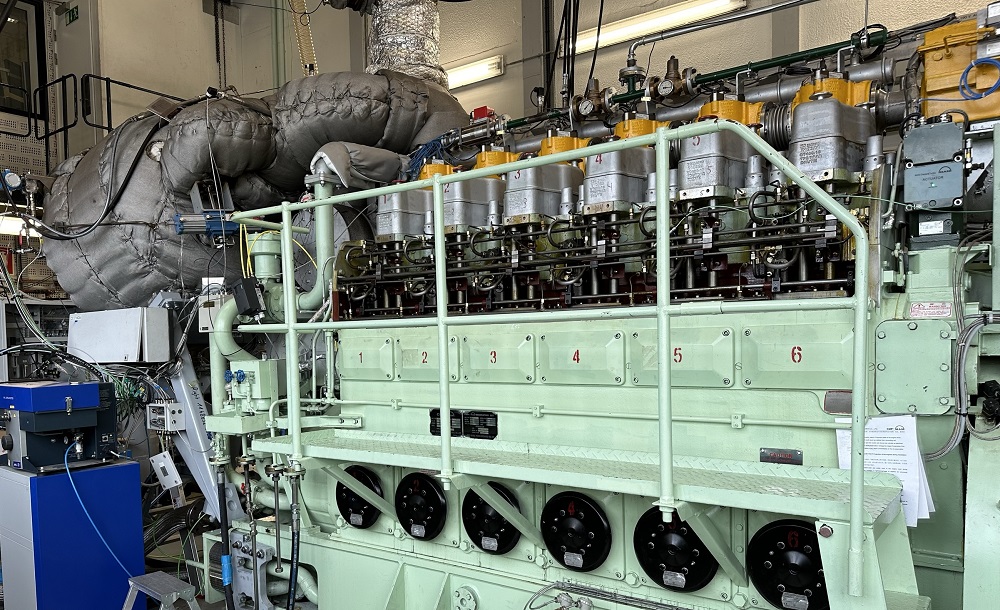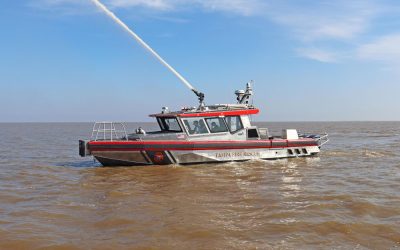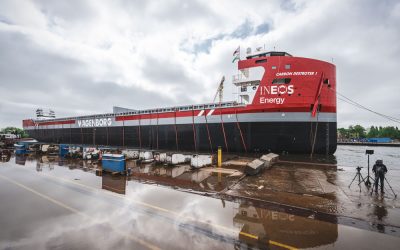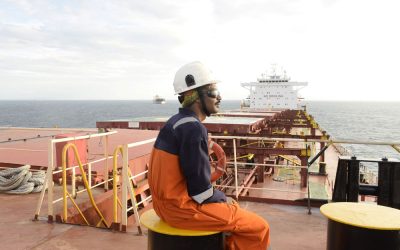Engine makers are diligently developing and refining solutions to methane slip, and new attention is focusing on aftertreatment, writes David Tinsley
Despite making up less than 2ppm of the atmosphere, methane is responsible for at least one-sixth of the total radiative forcing, a measure of the greenhouse gas (GHG) effect causing global warming. Methane slip from natural gas-fuelled engines thus has a high environmental cost.
With a growing merchant fleet equipped to use LNG for shipboard power, the maritime sector has intensified efforts to reduce methane slip and fugitive methane emissions. The impulse for fresh initiatives reflects new imperatives created by increased research data as to the extent and climatic implications of methane release into the atmosphere, and most notably the regulatory groundswell.
In the latter respect, with shipping’s incorporation this year into the EU’s Emissions Trading System (ETS), the reach of the edict will come to encompass methane emissions (as well as nitrous oxide) from 2026 onwards. Moreover, FuelEU Maritime requirements for the GHG intensity of energy utilised on board will take effect in 2025, necessitating closer attention by ship operators to methane slip.
Enhancements to marine engine design since the first LNG dual-fuel models were introduced 20 years ago have progressively reined-in incompletely burned methane, reducing or minimising slip rates, and markedly so in high-pressure two-stroke types. In the four-stroke category, emissions aftertreatment also affords a means of tackling methane slip and its deleterious atmospheric impact, although this presents tough technical challenges.
In the case of exhaust abatement solutions, the most promising method to treat and control enduring methane emissions is to pass the exhaust gas over a catalyst and convert the remaining CH4 into CO2 by complete oxidation. Although CO2 is a greenhouse gas, it is far less potent than methane. In fact, methane’s 100-year global warming potential (GWP) is around 28 times higher than CO2, and even greater on a 20-year term.
MAN ES targets 70% methane emissions reduction
Marine engine market leader MAN Energy Solutions has refined engine-internal measures throughout its two-stroke ME-GI range, minimising unburnt residues to the extent where it quantifies and guarantees methane slip levels at 0.2-0.3g/kWh over the load range. In its portfolio of four-stroke, LNG dual-fuel models, the slip factor has been halved over the past 10 years through internal engine architecture changes, but the company is pursuing different routes to achieve yet lower levels.
While an oxidation catalyst (oxicat) is not an option for two-strokes because of unsuitably low exhaust gas temperatures, it is a viable technology for removing unburnt hydrocarbons and carbon monoxide from four-stroke engine exhaust gases. The exhaust gas temperatures from MAN’s four-stroke dual-fuel (DF), and also spark-ignited (SI), engines are sufficient to support the oxidation of methane slip.
Among the latest R&D initiatives in the four-stroke domain, MAN ES has taken forward a project to develop and prove an oxidation catalyst with the ultimate goal of cutting methane emissions by 70% at 100% engine load. Under the IMOKAT II endeavour, the recipient of funding from the German Federal Ministry for Economics and Climate Action, the study team at the company’s Frederikshavn premises in Denmark is to investigate the operational behaviour of a pre-turbo catalyst conceived at group headquarters in Augsburg.
Whereas the predecessor IMOKAT I project, conducted in partnership with German academia, reviewed and evaluated different catalytic materials, coming up with a sulphur-resistant material containing no precious metals that facilitated high methane conversion, IMOKAT II signifies the prototype and technology demonstration stage. The current work at Frederikshavn centres on investigating the material’s potential on a test engine, with the goal of designing a catalyst solution that can be applied to a full-scale engine. Field testing aboard a vessel was expected to get under way within the first quarter of 2024.
Hyundai HiMSEN initiatives
The ever-more prominent dual-fuel, four-stroke medium-speed engine range produced under South Korea’s home-grown HiMSEN brand is also to be embellished with methane oxidation catalyst technology. South Korean reports indicate that HD Hyundai Heavy Industries Engine & Machinery Division is planning to complete a prototype oxicat by the third quarter of 2024, and then put the unit through a pre-release test campaign to ensure that the system functions and performs as expected.
It is anticipated that oxicat aftertreatment will cut methane release by up to 80%. The Group has previously implemented engine-internal abatement measures for the LNG dual-fuel engines, encompassing refinements to combustion chamber design and the use of control logic in the shape of the software-based Methane Slip Solution (MSS). Integrated into the proprietary HiMECS engine control system, MSS employs multi pilot fuel injection (MPI) and cylinder cut-off strategies and is focused on 0-50% engine load conditions. With MPI, additional pre-injection of pilot diesel fuel promotes flame propagation in gas mode.
The design change entails the minimisation of crevice volumes in combustion chamber parts, i.e. cylinder head, cylinder liner, flame ring and metal gasket, showing efficacy across the load range. The combination of MSS and crevice reduction has the most beneficial outcome when dual-fuel engines are running at lower loads, purportedly cutting methane slip by some 80% at 25% load.






